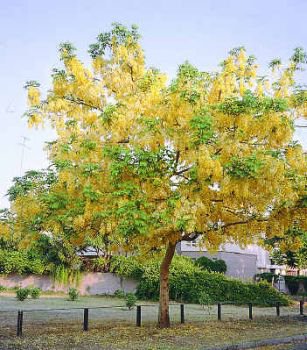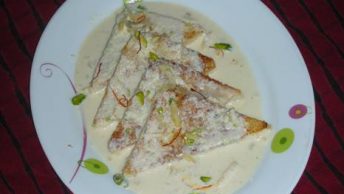SONARI: (Indian Laburnum)
(Cassia fistula)
Family: Caesalpiniaceae
Sanskrit name: Aragvadha
Hindi name: Amaltas
One of India’s loveliest flowering trees, the indigenous Indian laburnum is thought to be the most beautiful of all the laburnums, its drooping clusters longer and its individual blooms larger than, their counterparts in other regions of the world.
Indians associate the tree with the hot summer months when long drooping sprays of yellow flowers cover the laburnum in clouds of gold. Every region has its own name for the tree. A common name in northern India is “the monkey tree,” because of the monkeys clambering over its branches in search of the sweet pulp which enclose the laburnum’s seed pods, a pulp which is also used by humans to flavor their tobacco, and by Ayurvedic physicians in cleansing the body of its wastes.
A basic principle of Ayurvedic medicine is the maintenance of the body’s health and immune systems. In order to achieve this, Ayurveda recommends a regular and systematic cleansing of toxins through the elimination of body wastes.
Indeed, the cleansing strength of the Indian laburnum featured in ancient religious rituals as a defense against “the snake powers of the Three Worlds,” Charaka interpreted as meaning the tree was efficacious as an antivenin against snake bites, as an antitoxin, and in expelling internal worms.
Ayurvedic medicine describes the fresh sweet pulp enclosing the laburnum’s seed pods as all effective remedy for colic, while the matured pulp is used to make a gentle laxative, safe for children and pregnant women. Externally, the
bark and leaves are ground into a paste for chronic skin infections. Distillations from the flowers and decoctions made from the powdered root are given for heart diseases to enlarge the capillaries in the circulatory system.
In clinical tests on the Indian laburnum, its leaves, stem bark, and fruit pulp were all found to have antibacterial properties. The root showed antifungal activity, and the essential oils extracted from various parts of the tree showed
antiviral properties.
Excerpted from The Garden of Life by Naveen Patnaik.
Illustration: Photograph of an Amaltas tree in bloom.







